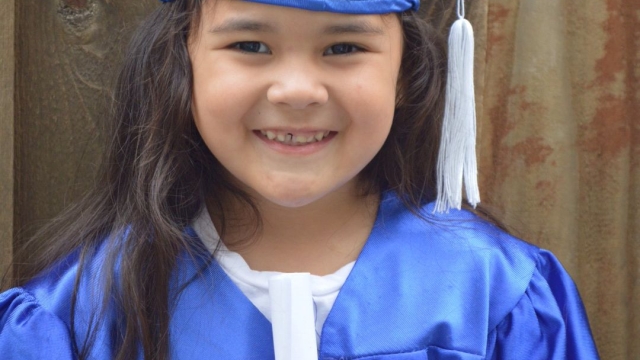
When it comes to graduation ceremonies, one iconic symbol that immediately comes to mind is the cap and gown. Whether it’s the adorable sight of preschoolers donning miniature caps and gowns or the regal attire of individuals receiving their master’s degrees, these garments hold great significance in the world of academia. They not only represent achievement but also serve as a timeless tradition, connecting generations of graduates from all walks of life.
The presence of caps and gowns at graduation ceremonies dates back centuries and can be traced to the medieval origins of universities themselves. In those early days, scholars wore robes as a way to distinguish themselves from the general population, symbolizing their dedication to learning and pursuit of knowledge. Over time, this tradition evolved to include the iconic cap, also known as the mortarboard, which became an integral part of the graduation ensemble.
Preschool Cap and Gown: Commemorating Milestones
Preschool graduation marks an important milestone in a child’s early education journey. It is a time when young learners make the transition from preschool to elementary school, and their achievements are celebrated. One of the traditions that make this occasion significant, is the donning of preschool cap and gown.
The preschool cap and gown symbolize the children’s accomplishments and serve as a visual representation of their readiness for the next phase of education. These tiny graduates proudly wear their caps and gowns, creating an adorable sight for their families and loved ones in attendance. The cap, often decorated with tassels in various colors, adds a touch of excitement and whimsy to the delightful atmosphere.
For preschoolers, the cap and gown signify a sense of achievement and pride. The process of getting ready, putting on their caps and gowns, and participating in the graduation ceremony instills in them a sense of accomplishment. They feel like they are part of something special, and this experience helps build their self-confidence as they take their first steps into the world of formal education.
Philippines graduation sash
The tradition of preschool cap and gown also fosters a sense of community and togetherness. It brings parents, teachers, and classmates together to honor and celebrate the achievements of these young learners. Preschool graduation ceremonies, with their vibrant caps and gowns, create lasting memories and a sense of unity among the families involved.
By commemorating milestones through the use of caps and gowns, preschools embrace the significance of these early accomplishments. They provide a tangible symbol that represents the young graduates’ growth, progress, and readiness to embark on the next chapter of their educational journey. The preschool cap and gown, with its charming and meaningful presence, contribute to the joy and importance of this momentous occasion.
Master’s Degree Caps and Gowns: Celebrating Academic Excellence
Master’s degree caps and gowns hold significant importance in recognizing and celebrating academic excellence. These distinguished outfits symbolize the dedication, hard work, and intellectual growth of individuals who have reached the pinnacle of their educational journey.
The elegant cap and gown worn during a master’s degree graduation ceremony represents the culmination of years of intensive study and research. It serves as a visual reminder of the countless hours spent in lecture halls, libraries, and laboratories, striving to expand knowledge in a specific field of expertise.
Beyond the personal achievement, donning a master’s degree cap and gown also pays tribute to the institution where the degree was earned. Universities take great pride in the accomplishments of their graduates, and the ceremonial attire serves as a collective symbol of the institution’s commitment to fostering academic excellence.
Moreover, the master’s degree cap and gown provide a sense of camaraderie among the graduates. Identical in appearance, they create a visual unity, reinforcing the shared experience and journey of attaining a higher level of education. This common attire fosters a feeling of belonging and reinforces the bonds formed during the pursuit of knowledge.
In conclusion, the master’s degree cap and gown encapsulate the immense dedication, perseverance, and scholarly achievement of those who have successfully completed their graduate studies. These garments serve as a visible manifestation of the academic journey and represent the celebration of individual accomplishment, institutional pride, and collective unity.
The Evolution of Caps and Gowns: A Symbolic Tradition
The academic tradition of wearing caps and gowns has a rich history that has evolved over the years. From preschool graduations to master’s degree ceremonies, these iconic garments have become symbols of achievement and tradition in educational settings.
Symbolizing the First Steps
Preschool cap and gown ceremonies mark a significant milestone in a child’s educational journey. These adorable miniature versions of the traditional caps and gowns serve as a symbol of transition from early childhood to the first steps of formal education. As little ones don their tiny caps and gowns, they embrace a sense of accomplishment and readiness for the next chapter in their educational adventures.
A Sign of Scholarly Achievement
On the other end of the academic spectrum, master’s degree caps and gowns hold deep significance for those who have dedicated years to their studies. These gowns represent the culmination of rigorous academic pursuits and the mastery of a specific field. Donning a master’s degree gown signifies not only completion but also the expertise and commitment required to attain this advanced level of education.
A Tradition Carried Forward
Throughout the years, caps and gowns have remained a timeless symbol of academic achievement and tradition. From the earliest educational milestones to the pinnacle of higher education, these garments continue to symbolize the dedication, hard work, and success of students at every level. As the tradition of wearing caps and gowns persists, it serves as a reminder of the continuing pursuit of knowledge and the transformative power of education.
